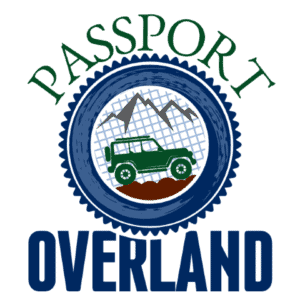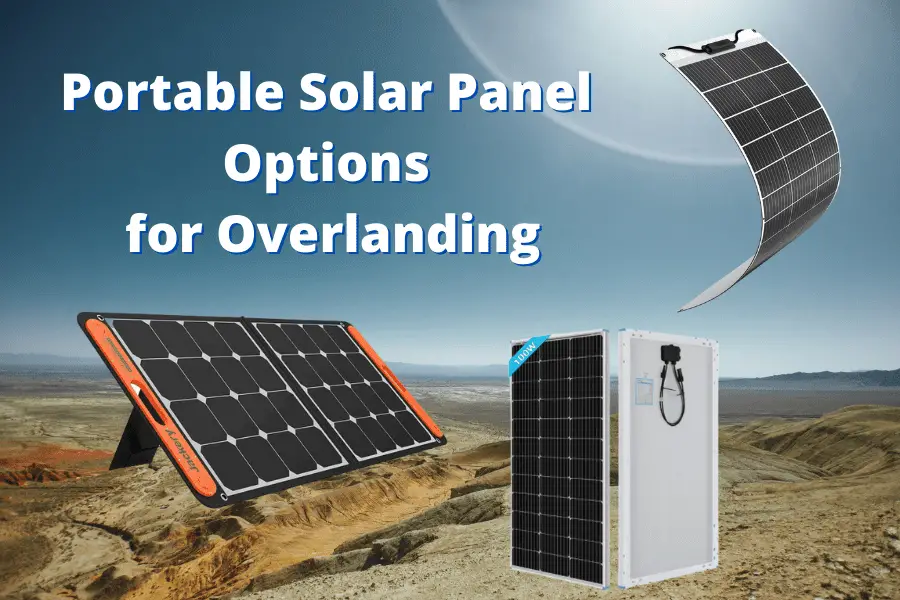
Many overlanders have already switched from the gas-powered power system to a more sustainable power solution for overlanding, which is found in the mighty solar panel. Why spend a lot on fuel when you can get free electricity from the sun? You not only save a hundred dollars, but you also reduce the impact on the environment.
If you’re wondering what solar power options you have for overlanding, consider your research done! You have three main solar power options.
The 3 solar power options for overlanding are fixed, portable, and flexible or blanket solar power systems. For a fixed panel, the brand Renogy is the most reputable one. A portable, the Jackery brand is on the rise. For a blanket, you can never go wrong with the Top Solar.
Let’s take a deeper dive into each type and find out which one is the perfect match for your power needs and camping setup.
Fixed Solar Panel
Most of the solar panel systems you’ll see in overlanding are fixed on the vehicle’s rooftop. Fixed solar panels are also called rigid panels. They are made up of monocrystalline cells and the aluminum frame and tempered glass protect the panel.
Fixed solar panels are durable and resistant to destructive elements. If overlanding is your life and you always go on adventure trips weekly or monthly, then fixed solar panels are a practical choice.
How to install
Mounting a rigid solar panel onto your vehicle’s rooftop is quite a challenging task, but with the right solar kit from Renogy you can easily set up a solar panel system, even all by yourself.
The first step to installing a fixed solar panel is to secure it to your roof rack system with the mounting brackets, bolts, and nuts it comes with. Then connect the solar cable to the charge controller and, with the proper wire, connect the charge controller to the battery. If you have AC appliances, you’ll need an inverter. Connect the inverter to the battery.
It’s up to you how you place each component inside your rig, except of course the solar panel, which will permanently stay on your vehicle’s rooftop.
Pros
- You can take advantage of the sunlight as you drive, so by the time you reach the campsite, you already have a full battery ready to use.
- Durable design helps you keep for a long time.
- Securely placed on your vehicle’s rooftop so no one can steal it while you leave it to charge.
- Most Efficient
- Has High Capacity
Cons
- Relatively pricier than other types of portable models
- Heavier and bulkier than the portable models
- You can not angle it for optimal charging
- A bit difficult to install and you must have the right tools.
Cost
Fixed solar panels are a great option for overlanders and those who always seek adventures in off-grid places. But they are a bit pricier because of the many components used to generate more power.
The whole fixed solar power system set up can cost up to $500 if you buy the solar kit and up to $800 if you buy the individual components. A 100-watt 12V rigid solar panel is the standard in overlanding and it can cost anywhere from $100 to $200. The more wattage and the higher the quality of the components, the pricier the setup will be.
The Best Fixed Solar Panel
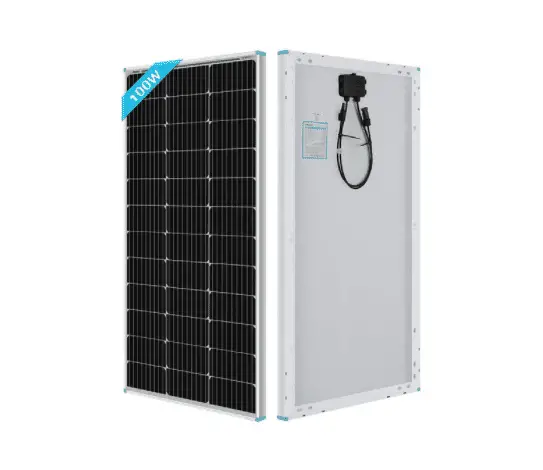
If you’re wondering what fixed solar panel is ideal for your power needs, you can go with the most reputable brand. Renogy is popular among overlanders for a reason. Many have already testified to its greatness, and almost all recommend this solar panel. The Renogy 100-watt 12V Solar Panel is a durable solar panel that can provide 400 to 500 watt-hours of electricity per day.
If you want a kit, Renogy also has solar kits for beginners and other components you need to set up your own solar power system.
Portable Solar Panel
For overlanders who only go on overland travel once in a while or once a month, portable solar panels are a great choice. Portable solar panels are also for those who are afraid of the electrical system and wiring requirements of rigid solar panels.
How to use
Portable solar panels are easy to use and only require a simple wiring system to distribute the electricity from the solar panel to the battery. Some portable panels have a built-in charge controller at their back, so you can directly connect the solar panel to the battery.
Others only need a power station that is an inverter and battery in one. This will store and distribute the energy harnessed from the sun. You just pull out the stand of the solar panel located at its back and then face it to where the sunlight is. The panel is easily angled for optimal charging.
Pros
- You can use it not only for overlanding but also for your home appliances.
- You can use it anywhere and you can take it anywhere
- Less pricey
- You can angle it anywhere the sunlight is
Cons
- Easy to steal off your vehicle
- You assemble it every time you need to charge
- Plugging and unplugging can speed up wear and tear
Cost
The starting price for quality portable solar panels is $200. They may look pricier than rigid panels, but portable solar panels alone can power your devices. As compared to rigid panels that require additional components to function.
The Best Portable Solar Panel
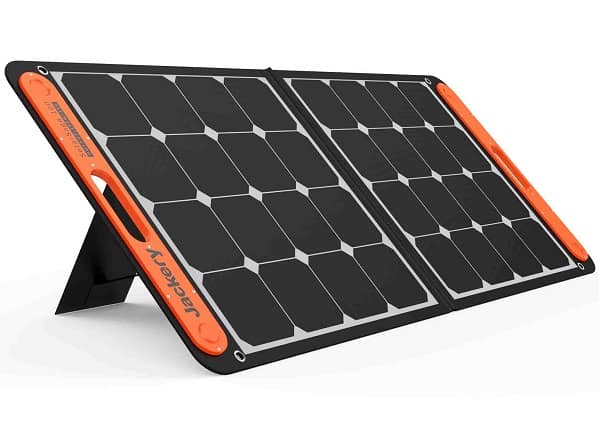
Amazon rates the Jackery Solar Panels very high. In fact, in terms of ratings, they rank number 1. The Jackery Solar Saga 100-watts Portable Solar Panel is a foldable solar charger. It has built-in USB outputs for an instant charging station for your devices.
If you want to store the electricity from the solar panel for later use, you can partner this portable solar panel with a Jackery Power Station that is a battery and an inverter in one.
Flexible/Blanket Solar Panel
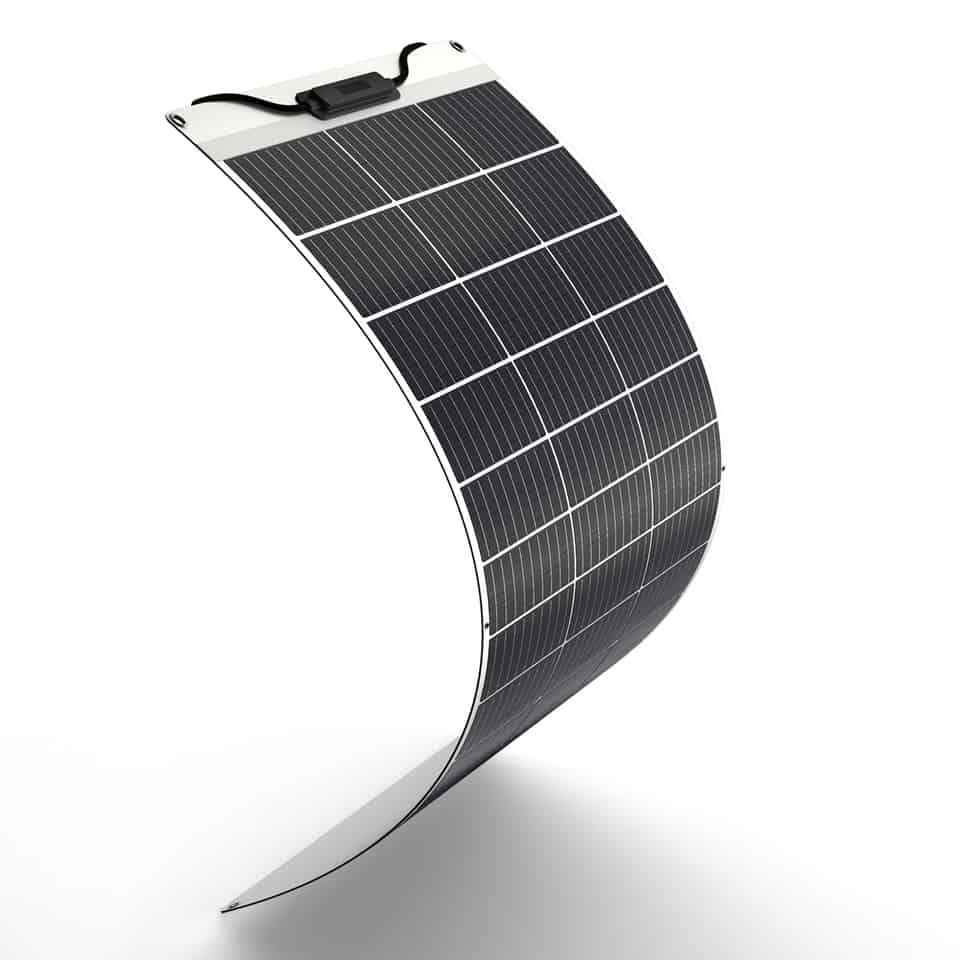
If you want a much lighter and more versatile solar panel, you can go with flexible or blanket solar panels. Flexible solar panels are thin-film panels, which are thinner and lighter in weight as compared to the other two panels mentioned earlier.
While they don’t have the aluminum frame of the rigid panels or the kickstand of portable panels, they are flexible enough to angle up to 240 degrees.
How To Use
Flexible solar panels work the same as rigid panels. They need a charge controller, battery, and an inverter to supply you with electricity. The only difference is that you can mount flexible solar panels on uneven surfaces.
Others glue them on plywood and mount them at the top of their overland vehicles to make them rigid. Flexible solar panels only weigh 4 pounds, while rigid solar panels almost weigh up to 20 pounds.
Pros
- lightweight
- flexible
- easy to install; can be hung or permanently mounted at the top of your vehicle
Cons
- less efficient; 7-15% efficiency
- shorter lifespan
Cost
Flexible solar panels cost the same as rigid panels. Blankets or flexible solar panels can cost anywhere from $100 to $200.
The Best Flexible Solar Panel
If you’re looking for the most affordable flexible solar panel that has 50% higher efficiency than typical thin films, you can go with the Topsolar Flexible Solar Panel. The minimum radius of the arc that this panel can reach is 15.75 inches. This is 0.1 inches tall and weighs only 3.97 lbs.
Takeaways
If you are a full-time overlander and you’re still using fuel to power your appliances and devices for camping, then you’re missing out on something. Solar power is the trend and is a means to an eco-friendly overlanding adventure.
You have 3 solar power options for overlanding: fixed, portable, and flexible. Have you decided which one to choose? Therefore, if you’ve already found the perfect match for you and your overland vehicle, then you’re ready to get out there and start your off-grid adventure.
Read more about the best portable air compressors for overlanding here.
